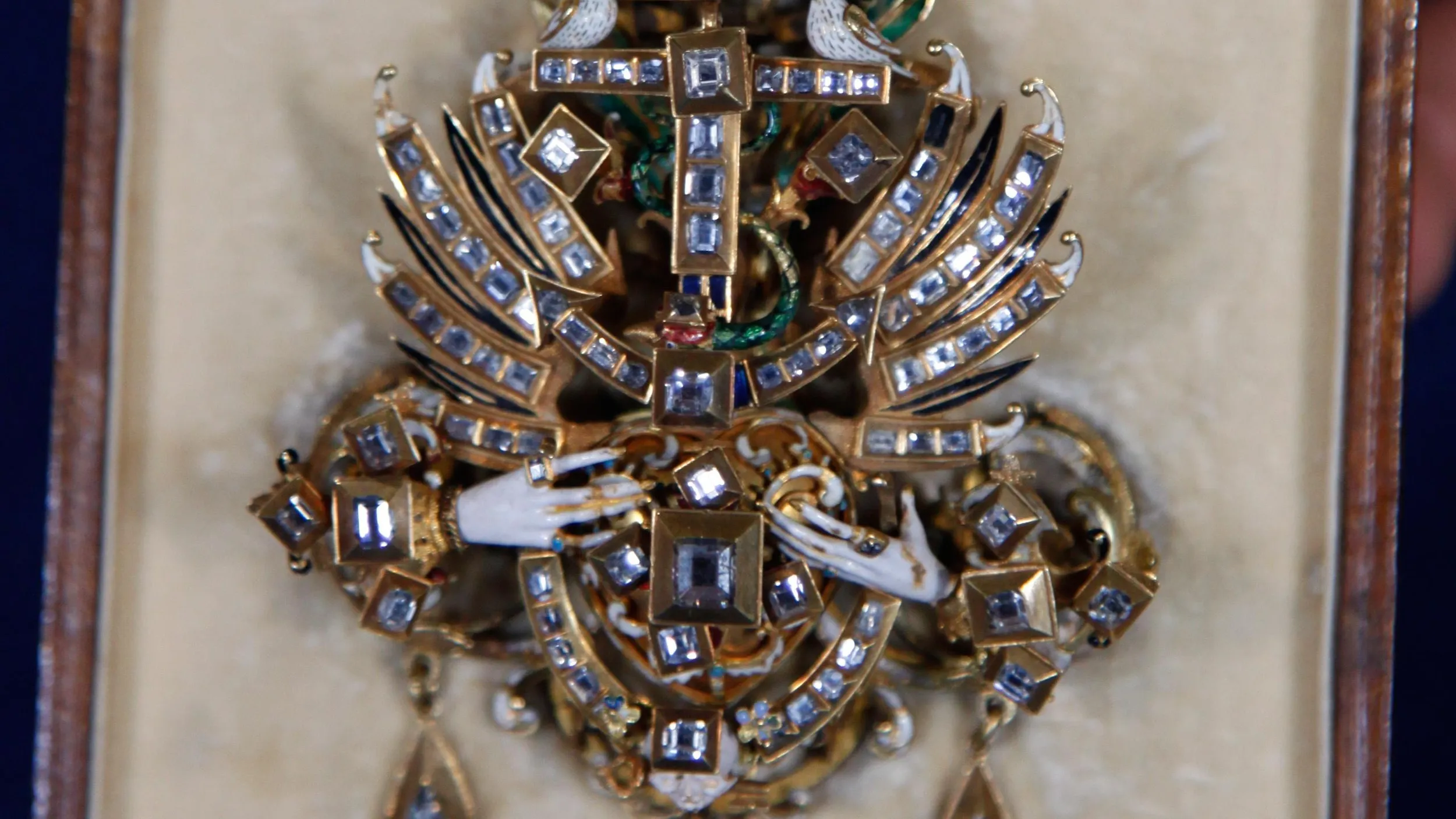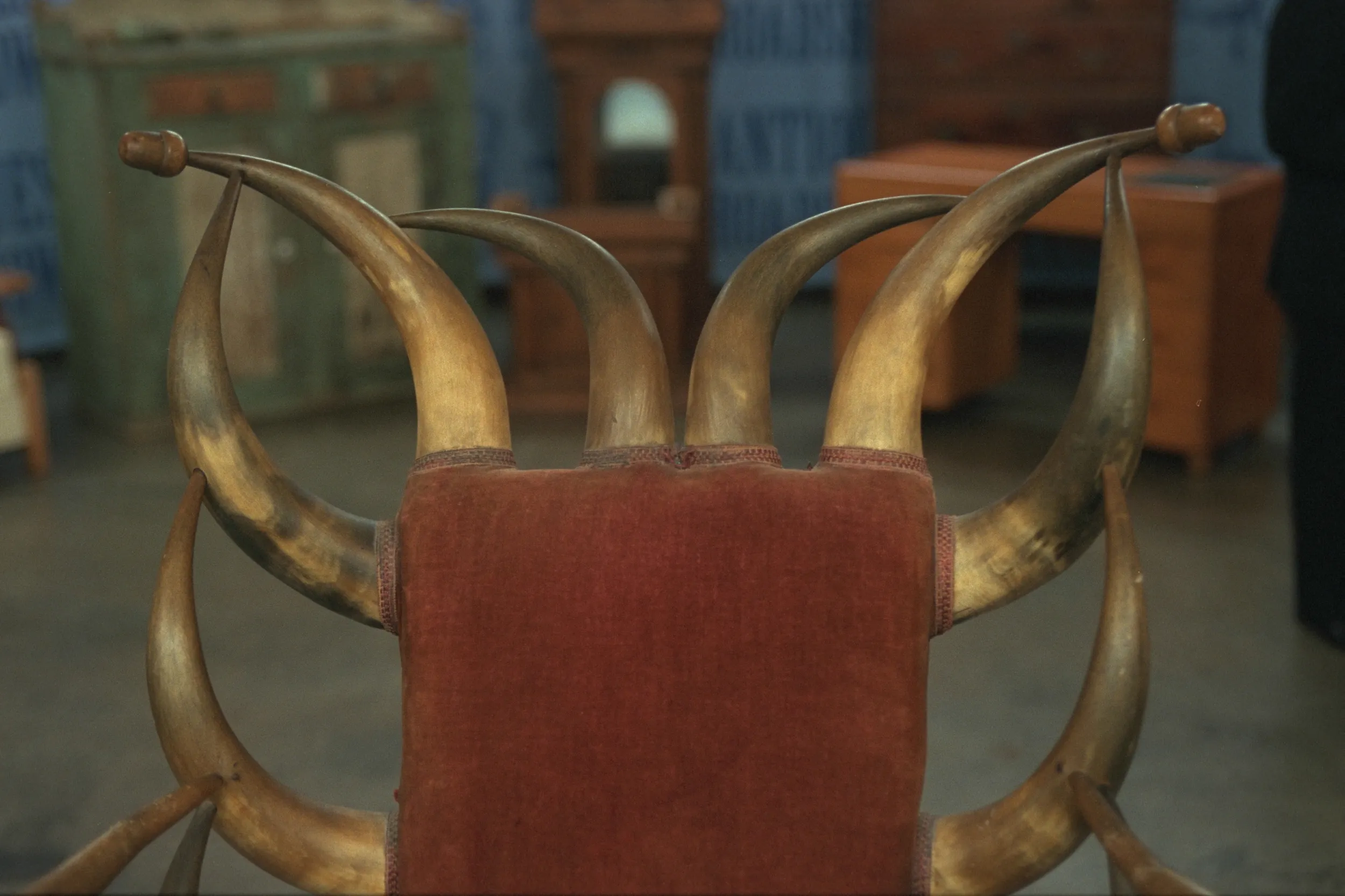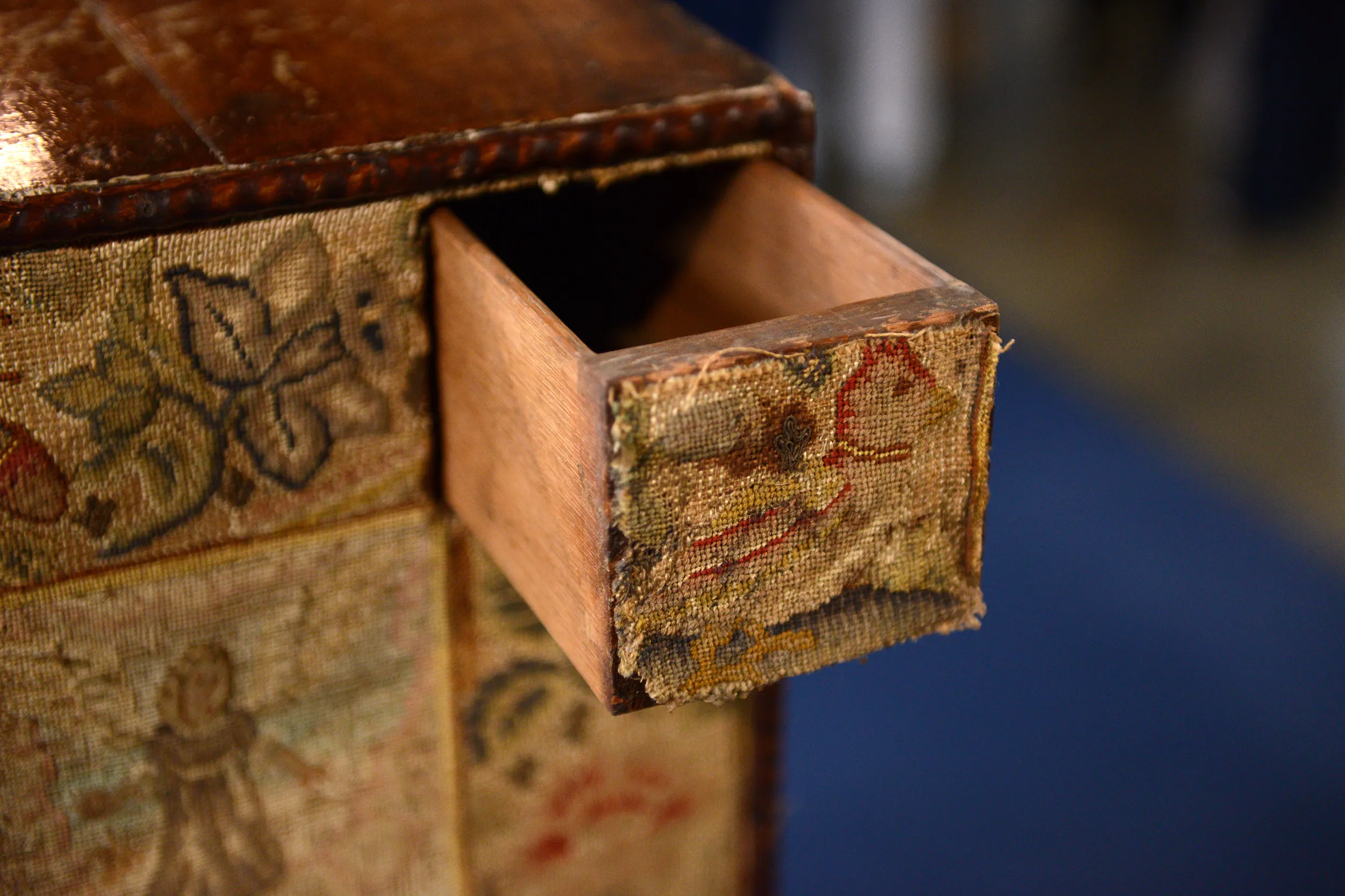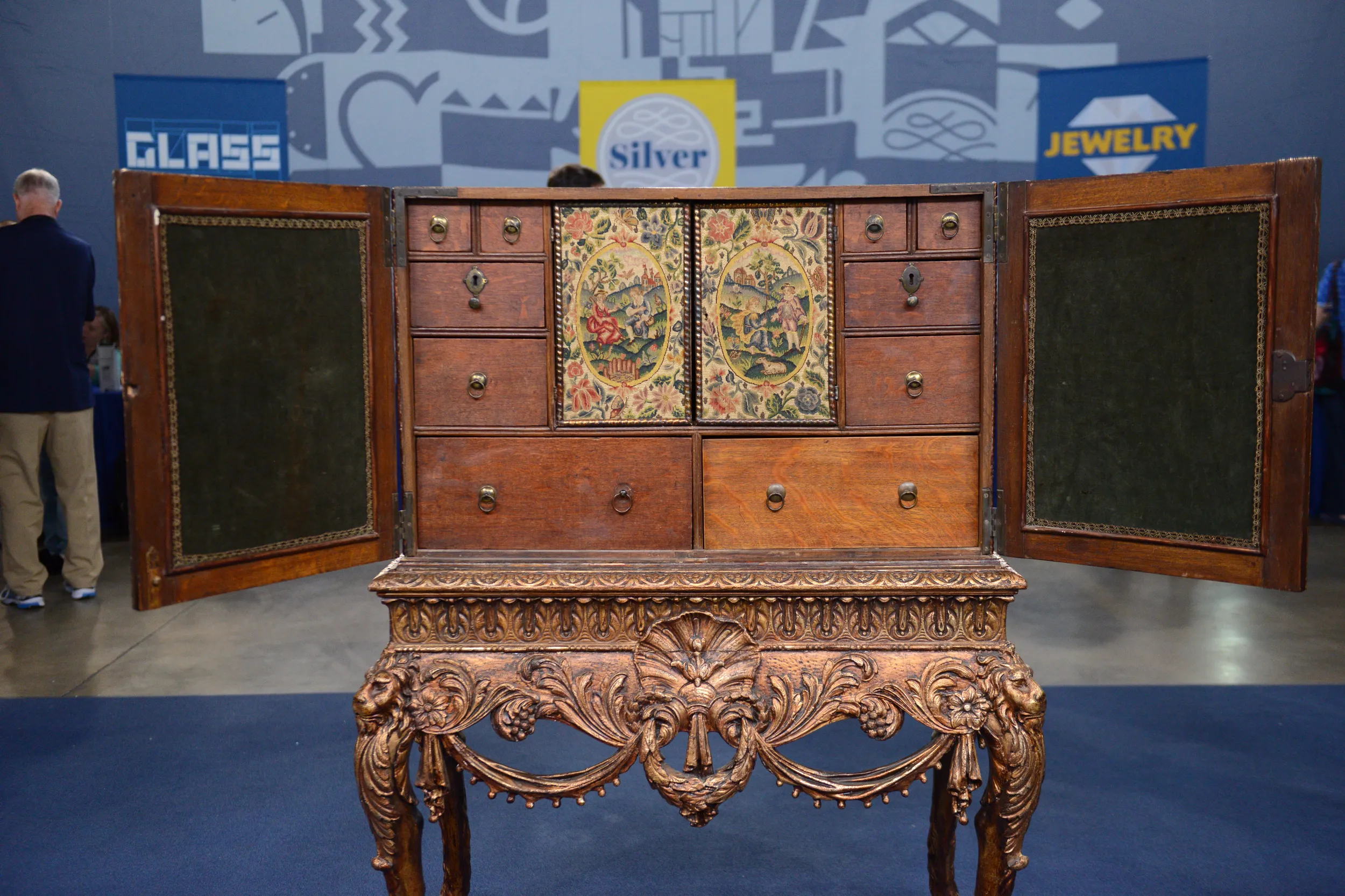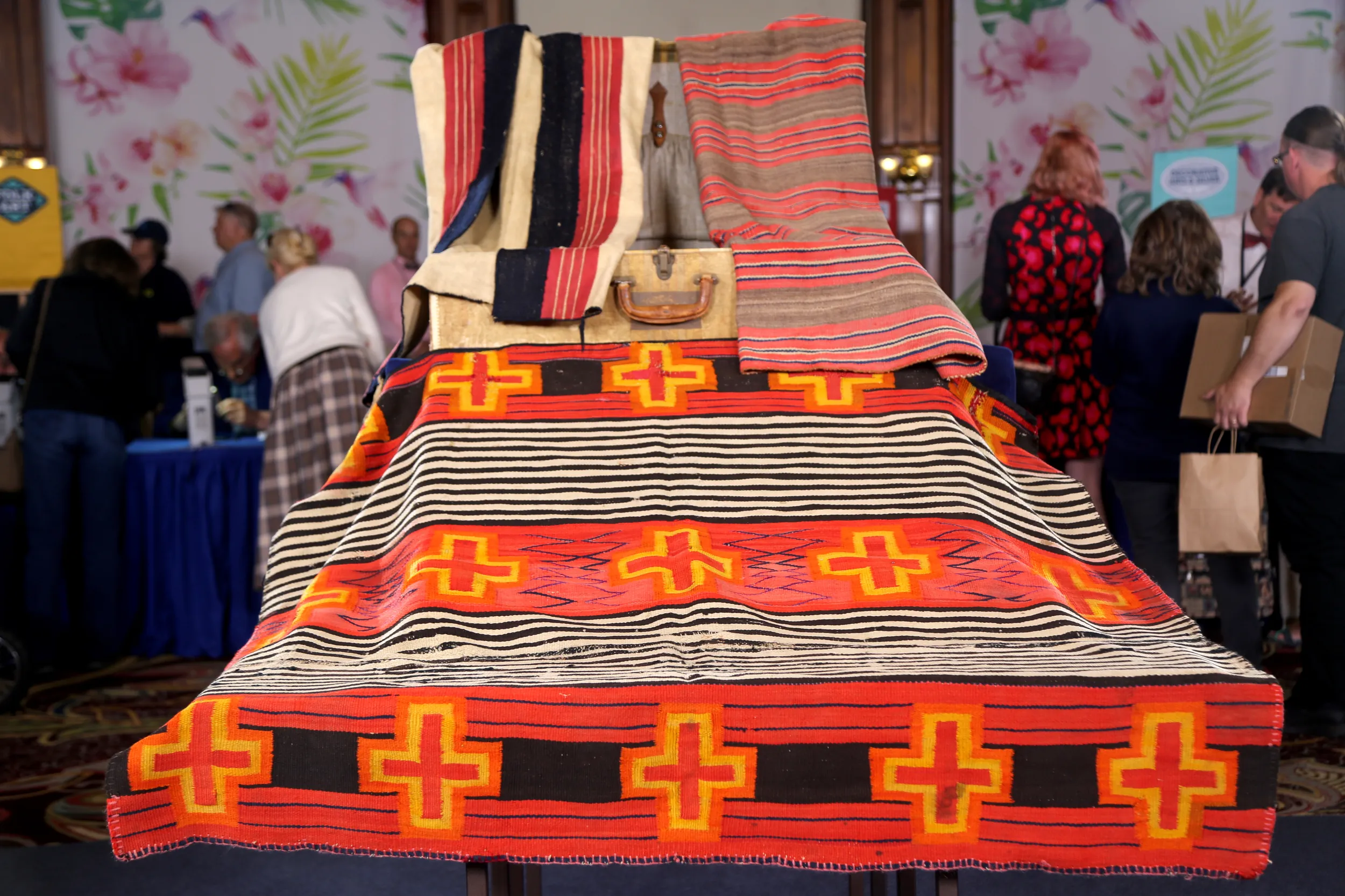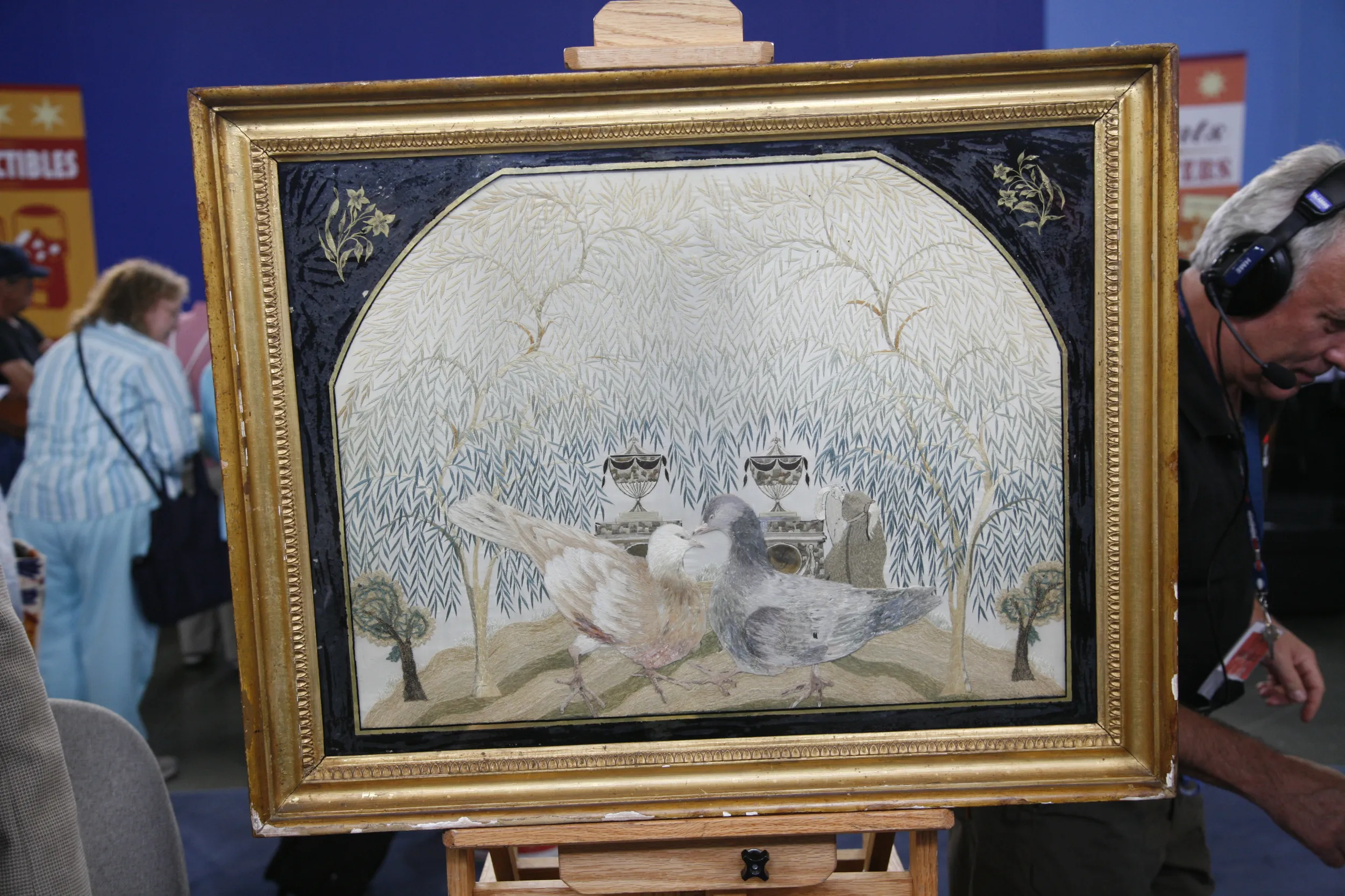GUEST: They were my mother's dolls, and my aunt told me that she had had them since she was a little girl.
APPRAISER: And any sort of time frame, time period when your mom would have had them?
GUEST: It would have been in probably '20s and '30s.
APPRAISER: It's interesting because you have a pair of twins, and they were designed by a lady by the name of Grace Cory Rockwell, in New York. And her first doll she made has a very funny name called "Fuji Wuji." And she actually designed these two dolls around 1925. Grace Cory Rockwell, an American designer. She had the heads produced in Germany by a company called J.D. Kestner. And the dolls were marketed through the Century Doll Company of New York. Very, very rare to find a pair of them. The bodies are made in America. They're American composition. In the '20s, most of the dolls were being made in America, so it's very rare to still find the bisque heads on them. The doll on the right has a little bit of a problem. Looks like your mom must have dropped it and broken it at some time, whereas the other one is in good shape. If you turn this one around, you'll see Grace Cory's signature on the back of the doll. Now, these were luxury dolls in their time. They weren't a five-and-dime item. You would get them at Schwartz's. They probably sold, when they were new, for probably five to ten dollars apiece. If the one hadn't had the little concussion in its life, the pair would have been worth around $8,000 for the two of them. So the perfect doll is worth around $4,000-- $3,000 to $4,000. The damaged one's worth, I would say, probably $600 to $800. So your mom had two wonderful little dolls in her life.
GUEST: Oh, she did.
GUEST: There was a dealer here in town, a very Bohemian sort of lady, who got interesting pieces. She would never tell you their provenance, so I have no idea from whence it came from her. She called me one day and she said, "I've got this piece that looks like you." It was relatively expensive 30 years ago.
APPRAISER: Okay.
GUEST: I paid $10,000 for it. I said, "Well, I've got to do a little bit of research” if I'm going to tell my husband I'm going to spend that much money for something. I have to know a little bit about it. And the base of it actually has the label, which I'm not sure was the original label. I think it may have been the gilder that probably regilded the piece. And I went to the library and I was able to establish that it had been in York, England, in at least 1816 to 1820, because that was the address where his shop was during that period.
APPRAISER: Okay, okay.
GUEST: So I said, "Okay, I'm going to pony up and take it." Well, it's been in my home ever since.
APPRAISER: First of all, this is one of the greatest pieces of English furniture I have ever seen in ANTIQUES ROADSHOW. It is so exciting to see this cabinet covered in needlework. And we have this incredibly elaborate base with lion's paw feet.
GUEST: Oh, hairy paw feet, yeah.
APPRAISER: Hairy paw, exactly, with hair coming down the leg, trailing down. Let's look at it here. And trailing down, and then at the top, of course, these very fierce, bold lions.
GUEST: Wonderful lions.
APPRAISER: So all of these elements-- the flower heads, the acanthus leaf scrolls. Look at the drapery that draped across.
GUEST: Oh, the beautiful drapery.
APPRAISER: And laurel leaves with a beautiful shell and bellflower. And then this wonderful design on the top, these curled bellflowers. It even goes to the back and it's even carved on the inside of the legs, which is so beautiful. All of those elements, all of those characteristics are like a signature of this George II period of English furniture. This would have gone in a castle, basically, a big castle. The great thing is it's not a marriage. Top and bottom were made together.
GUEST: Together.
APPRAISER: In 1730, and that label was of a later gilding. We open it up...and inside, we've got more needlework. These scenes are great, the shepherdess here with her cane, it looks like he's proposing to her. The condition is wonderful. And of course, the sides are done as well. It's just covered, it's fantastic. What do you think this is worth?
GUEST: For my insurance?
APPRAISER: Yes.
GUEST: My guess was something around $40,000.
APPRAISER: Okay, well...
GUEST: That may be overly optimistic.
APPRAISER: We would place an auction estimate on this piece of $80,000 to $120,000. If this cabinet on stand were properly conserved and regilded and brought back to that incredible gold color you can see peeking through that it had originally, the auction estimate would be placed at $150,000 to $250,000. And it could bring even over that. It may cost you $20,000 to $30,000, maybe even slightly more.
GUEST: I understand.
APPRAISER: But I think it would be worth it.
GUEST: It'd be worthwhile to do that.
APPRAISER: I think you've got a great eye and you have passion, and you're a nice lady. Thank you for coming.
GUEST: Thank you.
APPRAISER: Yeah, you've got an amazing piece.
GUEST: (laughs) Muah!
APPRAISER: (laughs)


